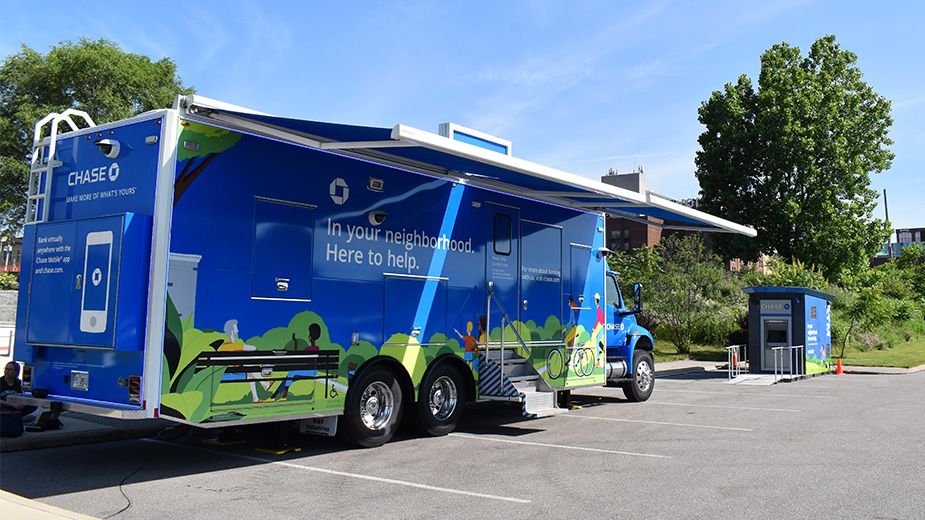Cleveland Fed Discusses Disparity in Business Lending
YOUNGSTOWN – A minority-owned business is less likely to have access to the capital needed to grow their business, according to the annual Small Business Credit Survey completed by the Federal Reserve Bank.
During a Fed Talk of the Cleveland Federal Reserve last week, a panel discussed the disparity between capital availability for small businesses, which can differ based on gender, racial and region.
Maria Thompson, an outreach manager with the Federal Reserve Bank in Cleveland, provided survey results to back up those concerns. Thompson said although revenue performance improved in 2021 from the pandemic-year lows, 48% of small businesses saw their revenue decrease in 2021 with another 14% unchanged. More than half of the firms replying reported they were in fair or poor condition financially.
Of those in poor financial condition, the minority businesses were struggling the most – 81% of Asian-owned business, 76% of Black-owned businesses, 74% of Hispanic-owned businesses and 55% of white-owned businesses.
But minority-owned businesses seeking business funding were less likely to receive all the financing sought in 2021, even less than pre-pandemic 2019 – only 15% of Asian businesses compared to 34% in 2019; 16% of Black-owned businesses compared to 26% in 2019; and 19% of Hispanic-owned businesses compared to 32% in 2019. White businesses also received less funding 35% in 2021 compared to 54% in 2019.
“Based on this information we still have a lot of work to do,” said Tiffany Jordan, the contract compliance manager of the Northeast Ohio Regional Sewer District, and one of the panelists.
Christopher Nance, vice president of construction and inclusive talent initiatives of the Greater Cleveland Partnership agreed. Statistically, he said if all of the 24,000 minority-owned businesses in the Cleveland area were able to add just one employee each, unemployment in the area would be cut in half.
“That’s how crucial minority-owned businesses are to the lifeblood of this community,” Nance said.
Yet he said there has not been much growth in the construction development industry for minority-owned businesses.
While minority neighborhoods may pay a lot of taxes, Nance said, when it came to PPE loans, they primarily went to majority communities while minority communities were overlooked.
Thompson added there is a common misconception that the financial gaps for minority-owned businesses are being addressed by programs, but the data does not really show it.
Another misconception noted by Jordan is that minority-owned small businesses are not capable of providing the same quality work as larger businesses. She notes every business is capable of making mistakes, but a small business is capable of fixing them also.
Additionally, Jordan said not all minority-owned small businesses are just starting out. Many have been in the family for generations.
With a large 10-year project underway, the Northeast Ohio Sewer District has used minority-owned business contracts 30% of the time, which Nance points out is intentional. Before the pandemic, the sewer district would hold open house events and invite all businesses to come and learn about how they can work with them.
Teleange Thomas, chief operations and relationships officer with JumpStart Inc. said it is about partnerships and holding events where small businesses can build relationships with clients and financial officers. JumpStart business advisers help walk female- and minority-owned businesses through the growth process to get to where they want to be.
Likewise, Nance said the Greater Cleveland Partnership requires business owners to be transparent and let them know what resources they may be lacking and then work to strengthen those areas.
While JumpStart worked with 37 small businesses last year, with 68% of them black-owned businesses and 72% female-owned, Thomas said there needs to be more options for people to find the best fit for their business, as well as the capital, services and support they need.
“I think sometimes small businesses just don’t know where to go,” Jordan added.
Small businesses are considered those with less than 500 employees, which is the majority of businesses in the country. Half of the jobs are with companies with fewer than 500 employees and 75% of businesses have fewer than 10 employees.
More than 17,000 small businesses participated in the 2021 SBCS. The Federal Reserve invites all small business owners and business leaders to participate in the upcoming 2022 SBCS survey at fedsmallbusiness.org/survey through Nov. 4.
Copyright 2024 The Business Journal, Youngstown, Ohio.


